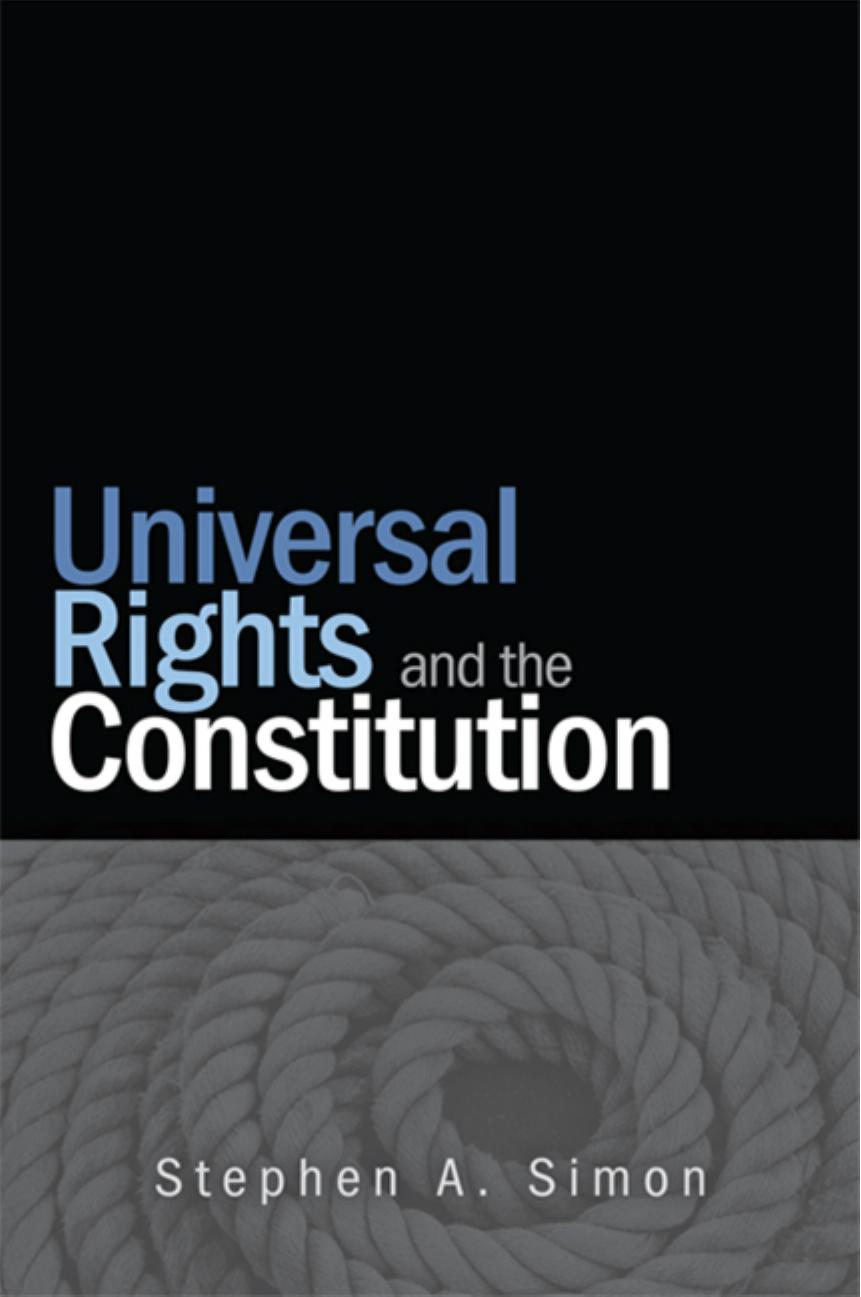Universal Rights and the Constitution by Simon Stephen A

Author:Simon, Stephen A.
Language: eng
Format: epub, pdf
Publisher: State University of New York Press
Published: 2014-10-19T04:00:00+00:00
The Persistent Puzzle
Constitutional theorists long have been preoccupied with the counter-majoritarian difficulty, the problem of how to reconcile the institution of judicial review with the nation’s commitment to democracy. As one scholar surveying the subject has written, the countermajoritarian difficulty is “the paradigm that has driven constitutional theory for more than half a century.”1 Works in constitutional theory commonly are framed as accounts of judicial review that purport to render the exercise of that power consistent with democracy.2 Concern over the tension between judicial review and democracy is appropriate. Even though legislatures are not perfectly democratic, and courts are not entirely cut off from political checks, the former are more directly responsive to the electorate than the latter.3 Addressing the countermajoritarian difficulty is intertwined with the elaboration of interpretive frameworks because interpretation hinges on understandings about the grounds of the Constitution’s authority.4
Constitutional theories, then, are presented as attempts to solve a puzzle. Since democracy and judicial review are here to stay, the question is how to characterize constitutional interpretation in a manner that makes the two compatible. Scholars typically assume that interpretive theories must accommodate a set of requirements. Any theory must account for the outcomes in certain nonnegotiable decisions, such as Brown v. Board of Education. A theory also must enable rights to act as a meaningful check on the majority while constraining judges. Many theorists note the apparent tension between two opposing approaches before introducing a third way of thinking about interpretation, purportedly demonstrating that we do not need to choose between the poles after all. John Hart Ely, for instance, denied that a choice had to be made between following the Framers’ intentions and authorizing judges to second-guess value judgments made by legislatures.5 More recently, Balkin insisted that “we do not face a choice between living constitutionalism and fidelity to the original meaning of the text.”6 In a similar spirit, Fleming asserted that his aspirational account “charts a middle course between Scalia—the rock of liberty as hidebound historical practices—and Charybdis—the whirlpool of liberty as unbounded license.”7
Theorists have adopted a variety of strategies for dismissing the notion of a hard choice between two fundamentally different approaches to interpretation. One common strategy is to claim consistency with the constitutional text by starting analysis from extremely broad concepts that the text is said to embody and allowing each generation to define anew the meaning of these concepts. Dworkin contended that the Framers used extraordinarily vague language to charge later generations with engaging in their own independent moral analysis regarding the meaning of rights. While fixed exclusivists allow that the Constitution’s principles must be applied to situations that the Framers could not have anticipated, theorists adopting Dworkin’s strategy endorse a different kind of interpretive creativity. From an aspirationalist perspective, future generations must interpret the Constitution to make it the best it can be even if this means adopting interpretations that contradict the original meaning. One difficulty is that Dworkin never demonstrated as a historical matter that this is the kind of interpretation the Framers envisioned.
Download
Universal Rights and the Constitution by Simon Stephen A.pdf
This site does not store any files on its server. We only index and link to content provided by other sites. Please contact the content providers to delete copyright contents if any and email us, we'll remove relevant links or contents immediately.
Day by Elie Wiesel(2249)
The Age of Genius by A. C. Grayling(2175)
Gideon's Spies: The Secret History of the Mossad by Gordon Thomas(1955)
The Gulag Archipelago (Vintage Classics) by Aleksandr Solzhenitsyn(1730)
FATWA: Hunted in America by Pamela Geller(1724)
Columbine by Dave Cullen(1500)
Examples & Explanations: Administrative Law by William F. Funk & Richard H. Seamon(1331)
The Rule of Law by Bingham Tom(1320)
Men Explain Things to Me by Rebecca Solnit(1316)
Anatomy of Injustice by Raymond Bonner(1270)
Three Cups of Tea by Greg Mortenson(1261)
ADHD on Trial by Michael Gordon(1243)
That Every Man Be Armed by Stephen P. Halbrook(1241)
Gideon's Spies by Gordon Thomas(1218)
Palestinian Walks by Raja Shehadeh(1144)
The Source by James A. Michener(1137)
Fast Times in Palestine by Pamela Olson(1120)
Nothing to Envy by Barbara Demick(1042)
Constitutional Theory by Carl Schmitt(1038)
